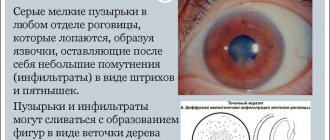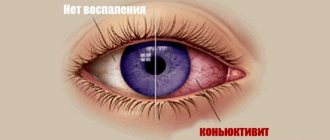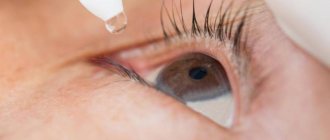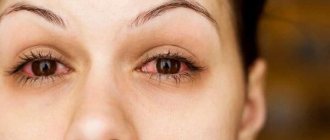How to remove swelling after alcohol
Waking up in the morning after a good drinking session, we, swaying slightly, approach the mirror, and, oh God! What kind of monster is looking at us through the looking glass? A cloudy wandering gaze, disheveled hair, and a face! Dear mother, can this be called a face? Yes, swelling really does sometimes change one’s appearance beyond recognition. And sometimes the legs are like those of an elephant. Why does swelling from alcohol appear so often and how can you get your face in order as soon as possible?
Causes of edema
Most often, after a get-together with a large amount of alcoholic drinks, the limbs (legs, arms) and face swell. And although this does not happen to everyone, with regular alcohol abuse, there is no doubt: a puffy face is guaranteed.
This happens due to the fact that ethanol causes severe intoxication of the entire body and leads to an imbalance in the functioning of many of its systems.
As for edema specifically, such a pathological accumulation of fluid in the tissues may indicate problems in the functioning of the blood supply and excretory system.
In addition, as a result of heavy libations, the ionic balance and acid-base balance are disrupted, and a pathological distribution of fluid in the body develops, which is sometimes called dehydration.
Swelling of the arms and legs after drinking alcohol
If your hands and especially your legs periodically begin to swell after drinking, you should think about drinking less.
But if your legs swell again and again, this is no longer a joke: it’s time to see a doctor. Here it is not just a matter of intoxication of the body and failure of the excretory or blood supply systems. If your legs swell from time to time, you may be talking about alcoholic cardiomyopathy or chronic arterial or cardiac hypertension.
Often such symptoms are observed with ascites (pathological accumulation of fluid in the abdominal cavity) - then this may be a sign of portal hypertension, which develops against the background of cirrhosis, hepatitis or alcoholic dystrophy.
Facial swelling after drinking
A swollen face and swollen eyelids are also frequent accompaniments of a heavy drinking feast. Not only alcohol is to blame here, but also:
- Rich foods, especially salty ones,
- Lack of protein foods
- Incorrect body position at night, during sleep,
- Drinking significant amounts of fluid at night,
- Constant lack of sleep
- Kidney and heart diseases.
To relieve facial swelling, first of all, it is worth detoxifying the body, and then arrange contrast baths, washing your face alternately with cold and hot water.
To reduce swelling of the eyelids, you can apply tea bags (preferably green), cold cucumber slices, or a napkin soaked in cool water to them.
How to quickly eliminate swelling after alcohol
If you notice that after drinking your legs are very swollen, or your fingers look like sausages, we are talking about alcoholic edema, which will have to be eliminated not directly, but indirectly. Those. It makes no sense to treat the swelling itself; it is worth starting with eliminating the causes that caused it.
Yes, you can begin to eliminate swelling of the legs and face by restoring microcirculation in the kidneys or by treating the accelerated outflow of fluid from tissues, but this will be more of a fight against the effect than against the cause.
First of all, you need to deal with the removal of intoxication from the body, i.e. accelerated elimination of toxins. One of our articles is devoted to this topic, but in short, it is worth cleansing the stomach and intestines, because... It is there that the greatest concentration of poisons and toxins is observed, including as a result of alcohol entering our body.
After cleansing the intestines and stomach, you should drink more regular still or mineral water, in small portions, but often. Sometimes specialists prescribe diuretics, but only after the withdrawal symptoms have been relieved, and it is better to use any medications after consultation with a specialist.
And remember – no “hangover”!
Typically, a swollen face and swollen legs return to their previous appearance after proper hangover treatment and restoration of the body. True, with severe binges, sometimes this may even take a couple of weeks.
And then, provided that we are not talking about an experienced alcoholic - there is a completely advanced case in which a whole course of treatment is required, and not for the edema itself, but for the entire body and its systems, which are destroyed under the influence of alcoholic beverages.
Causes of swelling and swelling on the face after alcohol
The parts of the body most susceptible to swelling, swelling and redness are the arms, legs and face. Not everyone experiences these signs of a fun evening out. However, with regular abuse of alcoholic beverages, swelling is guaranteed. The cause of edema after drinking alcohol is severe poisoning of the human body. Alcohol intoxication causes paralysis of many important internal processes of the body. And swelling on the face indicates unnecessary accumulation of fluid. This occurs when the circulatory and excretory systems are disrupted.
In some cases, with excessive consumption of alcoholic beverages, a violation of the ionic balance and acid-base balance occurs, as a result of which a pathological placement of fluid inside the body develops, which is called dehydration.
Facial swelling after drinking alcohol is sometimes caused not only by alcohol, but also by other factors:
- Low amount of protein in food consumed.
- Too salty food.
- Lots of snacks.
- Posture during sleep.
- Drink plenty of fluids before bed.
- Chronic lack of sleep.
- Heart or kidney disease.
Read also: Well, drunkards, alcoholics, parasites
Symptom danger
With a hangover, a person often has watery and sore eyes, blurred vision and a headache caused by a sharp drop in blood pressure. But hemorrhage in the area of the visual organs may indicate the development of the following dangerous conditions:
- Chronic dilatation of small blood vessels, which causes constant redness of the eyes. Periodic small hemorrhages are possible, clearly visible against the background of whites.
- The formation of blood clots in blood vessels, increasing the risk of stroke and heart attack. People 50+ are at high risk.
- The sensation of the presence of a foreign object, manifested in pain and burning, often leads to rubbing the eye with hands or a towel. Infection of the mucous membranes due to poor hygiene causes conjunctivitis, blepharitis; stye or chalazion.
- Thinning of the vascular walls and a decrease in their elasticity, which is accompanied by a deterioration in visual abilities.
- Decreased sensitivity of the nerve endings of the organ of vision leading to atrophy. The most dangerous symptoms of the disease include the appearance of blind spots, a decrease in the visible range and deteriorated discrimination of color shades. The rate of vision loss varies, but can lead to complete blindness.
- The development of retinopathy, in which hemorrhage occurs in the retina of the eye organ, and neuroretinopathy with blood entering the optic nerve. Such processes lead to visual impairment and blindness. Restoring eye function is impossible.
Prevention of edema
- Drink plenty of fluids. A large amount of drinks or water (pharmacy, mineral) is a catalyst for the removal of fluid. The norm is two liters of water per day. If you drink water during feasts, you will be able to avoid dehydration, and intoxication will not occur too quickly.
- Have a snack. It is not for nothing that since ancient times it has been believed that a snack at a feast is a necessity. Alcohol is absorbed much more slowly in this way and eliminated more easily.
- Don't drink carbonated drinks. Carbon dioxide will only speed up the absorption of alcohol, so swelling and headaches are guaranteed in the morning.
- Follow the norm. It's better not to finish drinking than to drink too much. You should set yourself a small norm and simply stop drinking after a specific glass. For example, a glass per hour is an excellent solution, and during this time the body will have time to eliminate alcohol.
- Take sorbents. The most common activated carbon removes toxins from the body, which can cause serious water retention. Therefore, it is better to take the sorbent before the feast, as well as after it.
- Choose the right snack. During feasts, it is recommended to snack on lemon, sour apples, grapes, and also drink acidified water. Do not overuse fatty, smoked, salty foods that retain water.
By following these simple rules, you will avoid the appearance of edema after alcohol, and also significantly improve your condition and prevent hangover.
2018 – 2021, Bunata Dmitry. All rights reserved.
«>
Other reasons
The appearance of red spots on the face can be caused by various reasons. But in any case, this situation is not normal and requires careful study. If the cause of the condition is identified, then all measures should be taken to eliminate it.
The main reasons for the appearance of red spots:
- allergic reactions;
- skin diseases of infectious origin (caused by viruses or bacteria - acne, eczema, psoriasis, dermatitis, herpes, rosacea);
- other diseases (cardiovascular, neurological and endocrine, systemic lupus erythematosus);
- skin damage as a result of thermal or chemical burns;
- metabolic disorders;
- exposure to certain medications or substances (such as alcohol);
- prolonged exposure to negative environmental factors (cold, solar or ultraviolet radiation).
It has also been found that a number of factors can contribute to the appearance of red spots:
- heredity;
- immunity disorders;
- lack of certain vitamins in the body, primarily vitamins A, C and E, B vitamins, microelements;
- stressful situations;
- sudden change in climatic conditions.
The cause of the appearance of red spots on the face can only be determined by a dermatologist. And the treatment strategy depends on it.
Under the influence of ethyl alcohol, not just a persistent dilation of blood vessels occurs. Ethanol, affecting the composition of the blood, also clogs their lumens.
Red blood cells under the influence of alcohol thicken and stick together, forming mini-thrombi. Doctors consider the following situations to be the main reasons why red spots form on the face after alcohol:
- A natural reaction of the body's blood vessels to excessive drinking.
- Allergy of the body to ethyl alcohol, individual intolerance to alcoholic beverages.
- Chronic alcoholism, which develops after prolonged alcohol abuse.
Natural reaction to alcohol
With high blood pressure, the blood vessels involuntarily dilate. Since they are located in close proximity to the surface of the skin, the result is facial redness.
Almost always, this reaction goes away on its own, without causing the individual any special health problems.
But, if such a reaction is observed constantly, and even spreads throughout the body, this can already become a serious alarm bell. In this case, you should visit a doctor and carry out the necessary examinations. After all, such symptoms may indicate problems developing in the body in the functioning of certain organs:
- circulatory system;
- the liver, which produces certain enzymes to break down ethanol metabolites.
Allergy to alcohol
There are several options for the appearance of such spots in the face area, and they are as follows:
- Intolerance to alcoholic beverages, from birth;
- Reaction to alcohol, in the form of allergic manifestations;
- Weak blood vessels;
- Chronic dependence on alcohol.
Red color on the skin, secreted by capillaries. If they are in a narrowed state, then the skin becomes pale in color, but if they are expanded, then they are reddish in color.
Now, let's talk about all the options for the appearance of reddish spots after drinking alcohol.
- Intolerance to alcoholic beverages, from birth;
- Reaction to alcohol, in the form of allergic manifestations;
- Weak blood vessels;
- Chronic dependence on alcohol.
Now, let's talk about all the options for the appearance of reddish spots. after drinking alcohol.
Allergies to alcohol can be inherited and acquired during life. With congenital allergies, red spots appear even after drinking the slightest dose of alcohol. And later not only spots may appear, but also symptoms in the form of:
- headaches;
- nausea;
- vomiting;
- anaphylactic shock.
The development of the acquired form can begin after consuming poor quality alcoholic beverages with high levels of various chemical additives. If red spots on the face or body first appeared after drinking alcohol, then a person can attribute this to a food allergy.
They speak specifically about an alcohol allergy, symptoms in the form of:
- severe headaches;
- fatigue;
- peeling of the skin;
- lowering blood pressure.
Causes of red eyes
Conjunctivitis
This is an inflammation of the outer membrane of the eyes of bacterial, viral or allergic origin. In addition to the conjunctival injection (the eyes are red and watery), there is a feeling of sand in the eyes. When affected by bacteria, the red eye festers, with viral conjunctivitis - filmy overlays, and with allergies - lacrimation, conjunctival injection and redness around the eyes in combination with swelling of the eyelids of varying degrees.
Conjunctival injuries
These are most often scratches from her fingers, clothing or foreign objects. Less common are chemical burns (from alkalis, acids) or radiation damage (for example, welding). Changes in eye color and the sensation of a foreign object in the eye will persist until the outer layer of the eye heals
Inflammation of the cornea (keratitis)
It can be infectious (tuberculosis, influenza) or traumatic. Lacrimation is combined with redness of the eyeball, photophobia and spasm of the eyelids. The cornea becomes dull, loses transparency, and becomes covered with ulcers. The most common is herpetic keratitis, which produces a tree branch pattern in the eye. Photokeratitis is a consequence of sunburn. Amoebic and fungal keratitis often affects those who use lenses and do not follow the rules of hygiene. The outcome of keratitis can be decreased vision or blindness.
Iridocyclitis or anterior uveitis
This is a lesion of the anterior part of the choroid, involving the iris and ciliary body. In this case, infectious agents are most often only a trigger for immune inflammation. As the vessels of the iris dilate, its color changes to red or rusty. The eyes are red and sore; pain is typical and worsens with pressure on the eye. The pain can be quite severe, sometimes unbearable. The pupil constricts due to photophobia. Patients complain of blurred vision. The process can be acute or chronic. Complications can include adhesions leading to loss of vision.
Read also: How to get rid of a hangover at home
Hypertonic disease
Hypertension or symptomatic hypertension can lead to retinal angiopathy.
- The condition manifests itself in greater tortuosity and branching of the veins. In the macular region, venules take on a corkscrew shape (Gwist's sign). Due to this, small venules become visible. The arteries narrow unevenly, but may not change. Pinpoint hemorrhages and redness of the optic disc are detected. Angiopathy is characteristic of unstable increases in blood pressure or stage 1 hypertension. It is reversible and goes away with the correct selection of antihypertensive drugs.
- With stage 2 arterial hypertension or severe atherosclerosis of the arteries, angiosclerosis develops in the retina. The arterial walls thicken unevenly, resembling copper wire. Individual arterial trunks close and fall out of the eye's blood circulation. The veins become thinner and twist.
- When the eyes suffer significantly from prolonged unregulated hypertension, we speak of retinopathy, which is accompanied by damage to the retina. Hemorrhages and foci of turbidity appear in its tissue. In the area of the spot, swelling and the release of tissue fluid form a circle or star shape. When the optic nerve head is also involved in the process, we are talking about neuroretinopathy and the situation threatens blindness due to optic nerve atrophy.
- Renal hypertension causes a sharp narrowing of the vessels of the fundus, but atherosclerotic changes are not observed in them. In the first place are the manifestations of swelling.
Diabetes
Due to sharp fluctuations in blood glucose levels, it damages vessels of different sizes. The fundus of the eye also suffers. Vascular disorders in this pathology fall into three stages. Diabetes is not characterized by damage to the optic nerve head, but red eyes are a harbinger of significant vision loss and a harbinger of blindness.
- Diabetic retinal angiopathy is the first stage of vascular damage. The veins dilate unevenly and twist. Microaneurysms of the venous bed are observed in many places. At the same time, vision is still fully preserved.
- Simple retinopathy is stage two. To the above changes are added microhemorrhages in the retina and its clouding. There may already be vision loss.
- Proliferating diabetic retinopathy is the third stage, at which the destruction of the retina begins. In addition to massive and multiple hemorrhages, new vessels sprout, which can lead to ruptures and retinal detachment.
Increased intracranial pressure (glaucoma)
This is another reason for vascular congestion in the eye. An acute attack occurs when the pressure rises sharply and the blood supply to the eye is disrupted. A headache appears, patients notice that the eye has become red and hard, like a forehead or a table. Nausea, dizziness and vomiting may develop. Frequently recurring attacks or prolonged elevated intraocular pressure lead to optic nerve atrophy and blindness.
There are open-angle and closed-angle forms of glaucoma. In both cases, the production of intraocular fluid prevails over its outflow. The closed-angle variant is more typical for people who are farsighted or have had their lens removed. In this case, visual stress in poor lighting and medications that dilate the pupil can provoke an acute attack.
Xerophthalmia or dry eye syndrome
This is a consequence of insufficient production of tear fluid in the program of Sjögren's disease, Felty's syndrome, lymphoma, and some endocrine diseases (hypoparathyroidism, ophthalmopathy due to thyroid pathologies). Irritated and dry eyes indicate conjunctivitis. Also, the syndrome can be caused by surgical interventions on the eyes that reduce the thickness of the cornea or injure it (laser vision correction).
Other reasons
- Migraine against the background of vascular spasm looks very much like an attack of glaucoma. The attack can last several days, but is relieved by other methods than high intraocular pressure.
- A traumatic brain injury with bleeding from the nose, ear and hemorrhage in the eye is almost certainly a brain contusion.
- High temperature against the background of a variety of diseases can lead to dilation of blood vessels in the eye.
The face turns red after drinking alcohol. What to do?
To get rid of edema, you need to drink a lot of fluid and at the same time take diuretics (green tea, non-alcoholic beer, watermelon, the drug veroshpiron): this will restore the correct distribution of fluid in the body.
It is most beneficial to drink hydrocarbonate mineral water (Borjomi, Essentuki), and before drinking, take a glass of brine: the brine will replenish the loss of electrolyte salts and increase the effectiveness of subsequent drinking. For more information about what else is useful to drink after a hangover and how you can save yourself from swelling, read a separate article.
After prolonged binges, swelling may not go away for a very long time: up to a month or more. Only complete abstinence from alcohol and a physically active lifestyle will help. Then, over time, the swelling will gradually subside.
If your face turns red and “burns” after drinking alcohol, it is recommended to consult a doctor: for starters, a therapist, an endocrinologist and a neurologist. There are more than a dozen possible reasons: allergies to alcohol, intestinal dysbiosis and many others. Therefore, before treatment, you need to find out the cause.
Facial redness may be a type of alcohol allergy, read about this below.
In addition to tips for eliminating swelling, redness and swelling, there are actions that you should not do with a hangover, as they will only worsen your appearance.
Actions:
- Avoid any hot or warm drink, be it drink, soup or broth. Steam from warm foods will get on your face and worsen the swelling.
- Avoid salty foods in the morning. Salts retain fluid in the body and swelling will remain on the face for a longer time.
- A hot bath or shower will also not do any good, so you should give preference to a cool shower in the morning. You should not rub your skin too hard or use scrubs, as this will not give any effect. Limit yourself to a contrast shower, and your appearance will improve significantly.
After properly treating a hangover and restoring the body, swelling, redness and swelling of the face disappear immediately. However, when coming out of long-term drinking bouts, the face takes on a normal appearance after a few weeks. For an alcoholic with several years of alcohol abuse experience, facial swelling will go away only after completing the course of treatment of the body and restoration of all internal processes and systems that were destroyed by the influence of alcoholic beverages.
Ethanol is a common alcohol that causes vasodilation in the skin, internal organs and eyes when consumed once. If alcohol is consumed regularly or in high doses, it provokes the release of renin and norepinephrine, which increase blood pressure. Against this background, drinking people have a red vascular network in the eyes, and often hemorrhages in the eyeball. The situation is also worsened by problems in the capillaries, expressed in the gluing of blood cells in them and microthrombosis.
To get rid of edema, you need to drink a lot of fluid and at the same time take diuretics (green tea, non-alcoholic beer, watermelon, the drug veroshpiron): this will restore the correct distribution of fluid in the body.
It is most beneficial to drink hydrocarbonate mineral water (Borjomi, Essentuki), and before drinking, take a glass of brine: the brine will replenish the loss of electrolyte salts and increase the effectiveness of subsequent drinking. For more information about what else is useful to drink after a hangover and how you can save yourself from swelling, read a separate article.
If your face turns red and “burns” after drinking alcohol, it is recommended to consult a doctor: for starters, a therapist, an endocrinologist and a neurologist. There are more than a dozen possible reasons: allergies to alcohol, intestinal dysbiosis and many others. Therefore, before treatment, you need to find out the cause.
Facial redness may be a type of alcohol allergy, read about this below.
If the redness of the face is not severe, goes away easily and is not accompanied by other alarming symptoms, then this can be ignored.
Causes of red eyes after alcohol
The main reason why eyes turn red after drinking alcohol is vasodilation. Blood pressure at this moment increases throughout the body, but on the eyeball small blood vessels stand out especially clearly. At a young age, this condition usually does not cause dangerous consequences.
Redness of the eyes after drinking alcohol is the result of the effect of alcohol on blood vessels.
However, after 40 years, blood vessels lose their elasticity. If the walls of the capillaries cannot withstand the pressure, they may bleed.
For people who drink alcohol frequently and in large quantities, a network of small vessels appears not only in the eyes, but also in other areas of the skin, for example, on the face, around the eyes.
Redness of the eyes may be accompanied by other symptoms:
- slow visual reaction, especially risky when driving a car;
- decreased ability to regulate contrast sensitivity;
- twitching of eyelids;
- dry eye syndrome;
- alcoholic diplopia, when the coordinated work of the eye muscles is disrupted and double vision occurs.
Risk of red eyes
With regular intoxication of the body with ethanol, the development of vascular pathologies is inevitable, and the occurrence of alcoholic hypertension is fraught with serious health problems.
Red eyes after alcohol can be a harbinger of dangerous pathologies:
- the formation of blood clots in blood vessels, increasing the risk of stroke or heart attack, especially after 50 years of age;
- increased incidence of cataracts, which is confirmed by experimental studies;
- increased risk of retinal disease;
- decreased sensitivity of the nerve endings of the eyes and their further atrophy;
- thinning the walls of small vessels and reducing their elasticity, which will cause a general deterioration in vision;
- chronic vasodilation and constant redness of the eyes with periodic small hemorrhages.
The most common disease is angiopathy, which is diagnosed in almost every alcoholic, especially if the person also smokes.
Regular alcohol abuse can lead to the development of angiopathy
Symptoms of angiopathy manifest themselves in the branching of capillaries, small hemorrhages, and the appearance of thickenings in the eyes. The disease can be cured only by completely giving up alcohol and getting rid of alcoholic hypertension.
Otherwise it will progress:
- at the stage of angiosclerosis, the vascular walls will become denser;
- with retinopathy, small vessels will begin to burst in the retina;
- at the stage of neuroretinopathy, small hemorrhages already occur near the optic nerve head;
- the final stage may be nerve atrophy and loss of vision.
Ways to get rid of red eyes
There are several options for how to remove red eyes after alcohol. They can be divided conditionally into two groups – medications and folk remedies.
Medications
To restore normal eye condition after drinking alcohol, you can use over-the-counter drops recommended by pharmacists:
- Tsipromed;
- Taufon;
- Visin;
- Okumetil.
If your eyes are red, you can use vasoconstrictor eye drops
The recommended dosage regimen is 2 drops 5-6 times a day. By causing vasoconstriction, they can relieve redness. But these drops can only be used 9-10 hours after drinking alcohol. Otherwise they can cause:
- increased eye irritation;
- pain syndrome;
- blurred vision;
- individual side effect.
In addition, when used regularly after alcohol, medications can become addictive to the body, which will significantly reduce the therapeutic effect. We must also remember that most eye drops cannot be stored for more than 4 weeks after opening.
Traditional methods
Red spots around the eyes after drinking alcohol can be removed with herbal infusions prepared at home.
Decoctions must be prepared under sterile conditions to avoid introducing infection into the eyes.
After straining the cooled liquid through a thick cloth, you can use it to rinse your eyes.
Decoctions of herbs such as chamomile, calendula, plantain have an effective anti-inflammatory and therapeutic effect.
Several useful recommendations will also help improve your condition:
- You can wrap ice cubes in a towel and apply them to your eyelids;
- carry out a light massage around the eyes with a few drops of essential oil without rubbing it;
- make compresses on the eyes from a decoction of chamomile or chilled cucumber juice;
- drink a glass of green tea with milk;
- Apply neroli oil carefully to the skin under the eyes and eyelids;
- Apply a small amount of glycolic acid cream to your eyelids.
Why does the skin turn red after drinking alcohol?
Retinoic (yellow) peeling is a medium-impact peeling, but its mechanism is different from TCA peeling.
Retinoids are synthetic analogues of vitamin A, which stimulates the natural renewal of skin cells every 28 days. During this time, the cells gradually peel off layer by layer, unnoticeably to us.
But retinoids speed up the skin renewal process by up to two weeks, as a result of which we may notice the process of peeling, as this occurs in a larger volume in a short time. Therefore, the face is not covered with film, since there is no initial damage to the cells.
Red spots after alcohol are a pathology that often does not require specific therapy, but a number of reasons causing redness can lead to a further aggravation of the problem.
When the vasculature narrows, blood flows out. Part of the skin on the face turns red as the lumen of the blood vessels expands. The main component of alcohol - ethanol - acts on the body, causing changes in it at all levels. Vascular blood flow is blocked as a result of activation of biochemical processes, and red blood cells stick together.
The spots become visible in the face area first. This is due to the fact that this is the most delicate skin on the body. The redness also spreads to other areas, but it is not visible due to clothing. In red-haired people, redness on the arms and lower limbs is more noticeable than in dark-skinned people.
Redness and spots on the body appear most quickly where the skin is very delicate and the layer of subcutaneous fat is thin. Usually this is the face, neck and chest.
In these places, the blood vessels are located close to the skin, and it is because of them that the skin becomes red and blotchy.
Not everyone’s face turns red from alcohol: some notice red spots after the first glass, while others retain their normal appearance even after large doses of alcohol. Redness of a person's face and body when drinking alcohol is influenced by various factors, from genetic characteristics to allergies to a specific drink.
At the same time, people who drink always have a red tint to their skin. Let's take a closer look at why drinking alcohol causes red skin and what to do about it.
A person who abuses alcohol and suffers from chronic alcoholism. can be recognized by their characteristic purple complexion.
This is due to the fact that alcohol, regularly present in the body of such people, leads to the dilation of blood vessels to such an extent that their walls lose elasticity. The subcutaneous capillaries of alcoholics are constantly dilated and can no longer return to normal, and some vessels even burst.
This is why people who drink always have red faces and it is very difficult to do anything about it.
The only thing you can do is reduce your alcohol consumption. If you have an allergy, you should stop drinking the drink that causes the reaction and take an antihistamine.
Well, it’s better not to lead to chronic alcoholism at all. After all the deformations that alcoholism leads to, the face of an alcoholic cannot be returned to normal.
For what reason does redness form on the face and body after drinking alcohol? Many people suffer from this problem.
Red spots on the skin appear due to a rush of blood. This is due to the presence of capillaries, the smallest of which are located under the skin. It is this factor that determines the color of the skin, especially after drinking alcohol, since blood vessels dilate under the influence of alcohol. This explains why red spots appear on the body.
Red around the eyes
- The simplest reason is redness due to the fact that the eyes or facial skin were rubbed with hands. Mechanical friction causes the skin capillaries to dilate, which can cause red circles to form around the eyes.
- A blow to the orbital area also causes redness at an early stage, which then changes color to red-violet as blood flows under the skin.
- An allergic reaction from allergic blepharitis to angioedema due to vasodilation under the influence of histamine and similar mediators will also cause redness, accompanied by swelling and itching (see allergies to the skin around the eyes).
- Atopic dermatitis or eczema is a common skin condition that also affects the skin around the eyes.
- Insect bite – swelling, redness, itching and pain.
- Hemangioma is a benign tumor from an enlarged vessel, ranging in size from several millimeters to several centimeters.
Read also: Face turns red after drinking alcohol
How to remove red eyes at home: tips
An unsightly appearance is far from the worst thing that a hangover can lead to. Sometimes, against the background of alcohol intoxication, some dangerous disease worsens or appears for the first time, but it is not always possible to recognize it in time behind the symptoms of a hangover. Read our article about what symptoms are normal for a hangover, and if any signs appear, you should not be shy and immediately call an ambulance.
This article was last updated: 07/10/2019
- Be sure to wash your hands after touching someone who has any eye infection.
- Don't go to bed without taking off your makeup.
- Do not wear contact lenses for long periods of time. Always wash your contact lenses before and after using them.
- Avoid staying in front of the computer for long periods of time. This may strain your eyes. Be sure to take breaks to give your eyes a rest.
- Avoid contact with substances that cause eye irritation.
- If a foreign substance or irritant gets into your eyes, immediately flush your eyes with cool water.
- Drinking alcohol and smoking can also cause irritation and redness of the eyes.
After determining the cause of irritation, it is necessary to begin therapy as soon as possible. Until the unpleasant symptom develops into a serious illness that only a doctor can handle.
Add berries, fruits, nuts, dairy products and sea fish to your daily diet. Minimize your intake of salty foods, fried foods, sweets and soda.
If you are forced to sit in front of a computer monitor for a long time, give your vision a rest and take a break every twenty minutes. At this time, you can perform simple gymnastics for eye health. Try to rest at least eight hours a day, walk more in the fresh air.
Dear ladies worsen their condition by using low-quality cosmetics. An incorrectly selected cream for the area around the eyes can cause irritation or an allergic reaction. Be sure to remove makeup and cleanse your skin before going to bed!
To remove redness of the eyes during a hangover, you can use Visine drops or analogues: vial, Visoptic, ophthal, tetrizoline. Visine is an adrenergic agonist, it constricts blood vessels, which is why the eyes stop being so red. However, due to vasoconstriction, intraocular pressure may increase, and then discomfort in the eye area will still remain.
Try using search
What to do?
Elimination of swelling and redness of the eyelids
Often after drinking, swelling of the tissues around the organs of vision is observed, due to poisoning of the body with toxic substances. To reduce swelling and redness of the skin around the eyes, the following methods are used:
- The cloth soaked in ice water is applied to the eyes. An alternative is wrapped ice. Duration - no more than 10-15 minutes.
- Drink 1-2 cups of cooled natural green tea with the addition of low-fat milk. Hot steam will increase tissue swelling.
- Massage the area around the eyes with gentle movements without pressing hard. There should be no pain. Apply pressure on the center of the eyelids especially carefully.
- Compresses made from lemon balm, chamomile, calendula or brewed black tea are effective. Duration of application - 10-15 minutes.
- It is recommended to drink as much clean water as possible to speed up the process of eliminating alcohol breakdown products.
To improve the appearance of the eyes, it is recommended to rub neroli extract, which has a pleasant aroma, into the skin.
Removing red eyes
To restore the condition of the visual organs, drops should be instilled, which will lead to a narrowing of blood vessels. But it is important to consider that 9-10 hours must pass after the last drink. Earlier use may lead to increased irritation, pain and blurred vision. Individual side effects may occur. The most effective drops are “Vizin”, “Okumetil”, “Sofradex”, “Alomid”, “Tsipromed” and “Taufon”. Regular use of drops can lead to addiction to the body and lack of therapeutic effect. The optimal dosage is 1-2 drops. several times a day. After use, the eyes shine, making the appearance more attractive, which is considered an additional advantage.
Looking presentable is a must every day, no matter what happened the night before. Late-night gatherings with friends are one of the main reasons for a swollen face in the morning. The amount of drink, rest time and the degree of facial swelling are closely interrelated. The older a person is, the greater the chance in the morning after a night of partying to see in the mirror, instead of his own face, the face of a swollen Chinese man.
Slowly but surely
The most effective and useful methods for generally improving your health after drinking and, in particular, removing bags and swelling in the eye area, involve a thorough and long-term “treatment.” It consists of cleansing the body of the very cause of swelling - the remnants of the processing of ethyl alcohol, which poisons the liver and kidneys and can make it difficult to remove excess water.
In order to relieve swelling as a symptom of a hangover after alcohol abuse, you need to cleanse the stomach by drinking activated charcoal in accordance with the “patient’s” weight. You can also give a swollen person a gastric lavage - give him a lot of liquid to drink and induce vomiting.
Having completed the initial “cleansing” measures, it is worthwhile to strengthen the weakened health and provide support to the liver and kidneys. To restore normal metabolic processes in the body, you can drink a portion of cabbage or cucumber pickle, eat a few pickled cucumbers or tomatoes. Fermented milk products - yogurt, kefir, ayran, as well as a hearty breakfast - will help overcome a hangover, and, therefore, remove puffiness of the eyes and bags under the eyes.
At the end of the “resuscitation” procedures, it is recommended to take a contrast shower in order to finally restore order to the state of health, remove alcohol processing products excreted through the skin and stimulate the body to independently fight the consequences of drinking.
What is not recommended to do is to “treat” yourself by taking a new portion of alcohol - this will not only not help relieve swelling from the eyes, but will also worsen the situation, again forcing the liver to quickly begin its duties.
A cucumber mask will help - place thinly sliced cucumber rings or a grated mass wrapped in gauze over your eyes.
Why does swelling appear after drinking alcohol?
Before dealing with the question of why the face swells, it is necessary to find out what edema is from a medical point of view. In medicine, edema is understood as excessive accumulation of fluid in tissues, intercellular space and internal organs. Swelling of the maxillofacial area manifests itself in the form of changes in its contours, swollen eyelids, bags under the eyes, and general uncharacteristic swelling. Swelling itself is not a disease, but it signals possible health problems.
The face swells for various reasons. The main ones include:
- Heart failure. After ethyl alcohol enters the body, the functioning of the circulatory system may be disrupted - blood flow may slow down and, as a result, metabolic processes, including the removal of excess fluid.
- Kidney pathologies. As a result of alcohol exposure, the filtering and excretory capacity of this organ is reduced, and the amount of excreted fluid, which accumulates in the body, is sharply reduced. Abnormalities in the functioning of the kidneys are indicated by the characteristic puffiness of the face that appears after drinking alcohol or with a hangover.
- As a result of diseases such as cirrhosis, hepatitis or due to alcohol intoxication, the liver’s ability to filter the blood from toxic substances that enter the body along with ethyl alcohol is lost. Due to complex biochemical reactions, the fluid entering the blood structure leaves the blood vessels and settles in the surrounding tissues.
- Allergic reaction to alcohol and alcohol-containing drinks.
- Alcohol poisoning.
- Excess salt resulting from eating too salty foods and dishes: salted fish, smoked meats, homemade pickles and snacks. Salt prevents the timely removal of fluid, which is the cause of edema. In this case, swelling in the facial area may also appear in people who are not prone to alcohol abuse.
There are other reasons that cause swelling of the face after drinking alcohol. The likelihood of acquiring a swollen appearance after drinking depends on many factors: the person’s age, his general health, gender, heredity.
Important! If swelling begins to appear after each occasion of drinking alcohol in any quantity, this indicates either the development of chronic alcoholism or the presence of diseases of the internal organs. The only right decision in this situation is to give up alcohol and seek medical help.
Features of the impact. Red eyes hurt after drinking alcohol
What can drinking alcohol and human vision have in common? However, ophthalmologists are sounding the alarm: the effect of alcohol on human vision is so negative that the problem becomes a reason for discussion at medical conferences.
People who drink gradually decrease the acuity of their perception of objects, and this is not the worst consequence. After drinking low-quality strong drinks, a person can remain completely blind.
How does alcohol affect vision: features of the effects of alcohol on the eyes
Even young people notice a deterioration in the perception of objects after heavy drinking. But a healthy body recovers quickly and the symptoms disappear on their own without any treatment. However, with each new drink, vision decreases more and more, and recovery requires more time. Gradually, the visual organ wears out and ceases to clearly distinguish objects both near and far.
There are several reasons for visual impairment after drinking alcohol.
Impaired blood circulation in the eyes as a cause of visual impairment after alcohol
At the first stage after drinking ethyl alcohol, blood vessels dilate, a psychological uplift and pleasant excitement arise. Then comes the next stage - narrowing of the blood vessels, pressure increases in them and blood clots form.
After drinking alcohol, it is mainly the smallest capillaries that suffer - arterioles and venules, in which blood stops flowing normally. Insufficient oxygen supply to the retinal cells causes vision loss.
It is important to know! Doctors are shocked: An effective and affordable remedy for ALCOHOLISM exists... Read moregt;gt;gt;
After heavy drinking, darkening occurs in the eyes; a person needs brighter light to distinguish objects. The stronger the drink, the more pronounced the toxic effect of alcohol on the eyes.
Increased intravascular pressure: red eyes after alcohol
The euphoria after alcohol does not last long, but health is not restored so quickly.
Pressure increases in the vessels of the brain and eyes, which leads to minor hemorrhages. The capillaries of the retina and skin of the eyelids burst; many drunkards are familiar firsthand with the phenomenon of red eyes after alcohol.
Quick help measures
You can tidy up your face after excessive libations, relieve swelling under the eyes and, in general, quickly remove visual “traces of a crime” after drinking if you resort to traditional medicine recipes. First of all, unconventional treatment recommends cleansing the body with diuretics, including decoctions:
- St. John's wort:
- calendula;
- chamomile;
- celandine.
The most common green tea will help remove bags under the eyes formed after alcoholic libations, and if you supplement it with honey and lemon, you can completely get rid of a hangover in a matter of hours.
Another option is to refresh your face with compresses. You need to do it like this:
- Take two containers: one with warm and one with cold herbal infusions.
- Wet two compresses - one with a warm decoction, the other with a cooled one.
- Take turns applying compresses to the puffiness under the eyes.
There are several more ways to relieve swelling that appears after drinking:
- if the swelling is small, wash your face several times with cold water, and each time after the procedure do a light massage;
- It is possible to relieve swelling around the eyes with the help of cold compresses - ice cubes or frozen herbal decoction should be wrapped in a layer of cloth and applied to the face.
- A potato mask will help remove bags under the eyes and quickly restore complexion (grate one tuber on a coarse grater, squeeze, place in gauze and apply to the affected areas).
- A cucumber mask will help relieve swelling on the face and remove “bags” under the eyes - you can put thinly sliced cucumber rings or a grated mass wrapped in gauze on the skin. Swelling with this effect decreases within a quarter of an hour, which is why the mask can be used if it is necessary to urgently restore the “sales appearance”.
- It is easy to restore the freshness of the skin and relieve swelling on the face if you use a mask of fresh parsley soaked in green tea. The greens should be thoroughly chopped, poured with chilled tea, allowed to brew for a while, then applied to the swelling and removed after 15 minutes.
The fastest ways to remove swelling after drinking
You can quickly cope with swelling only if the “visual trace” of alcohol intoxication is insignificant. If drinking alcohol lasted more than one day, then you need to prepare for a longer restoration of normal appearance.
In any case, if after drinking alcoholic drinks the face swells, then traditional treatment methods, or massage, or medications will help. For minor swelling, it is enough to resort to one method, while for severe swelling, it is best to do a series of complex procedures.
Getting rid of minor swelling
The easiest and fastest way to get rid of mild swelling is to wash your face with cool water.
And a contrast shower will help best of all - it will not only restore a healthy complexion and eliminate bags under the eyes, but also relieve a slight hangover, restore strength and good spirits. A few tricks to quickly remove swelling from your face:
| Ingredient | Application |
| Strawberry | Grind a few fresh berries into a paste, add a drop of olive oil and apply to the swollen face for half an hour. |
| Fresh cucumber | Place the vegetable in the freezer for 5 minutes. Then cut off circles, place them on your eyes and face, and relax as much as possible for 10-15 minutes. |
| Green tea and parsley | Brew tea, cool. Add finely chopped fresh parsley to it. Apply greens soaked in tea to your face for 10-15 minutes. Rinse off with cool water. |
| Gauze contrast compress | Soak one piece of gauze in warm water and squeeze it out, dip the second in cool water. Apply alternately to the swollen face. |
Recovery for severe facial swelling
If there is severe swelling of the face, there is no one universal method that would immediately solve the problem. Swelling that does not go away over time is more difficult to eliminate. In this case, an integrated approach is important:
- Completely stop drinking any drinks containing alcohol;
- Take absorbent substances: activated carbon or Smecta to quickly remove toxic substances;
- Take plenty of clean, unsweetened liquids;
- Take walks in the fresh air more often, perform light physical exercises to tone the body and speed up blood circulation;
- Follow the regime, be sure to get enough sleep;
- Follow a diet: give up fatty, fried and sweet foods, prefer lighter foods.
At the same time, you can resort to traditional medicine methods and to taking the medications mentioned above.











